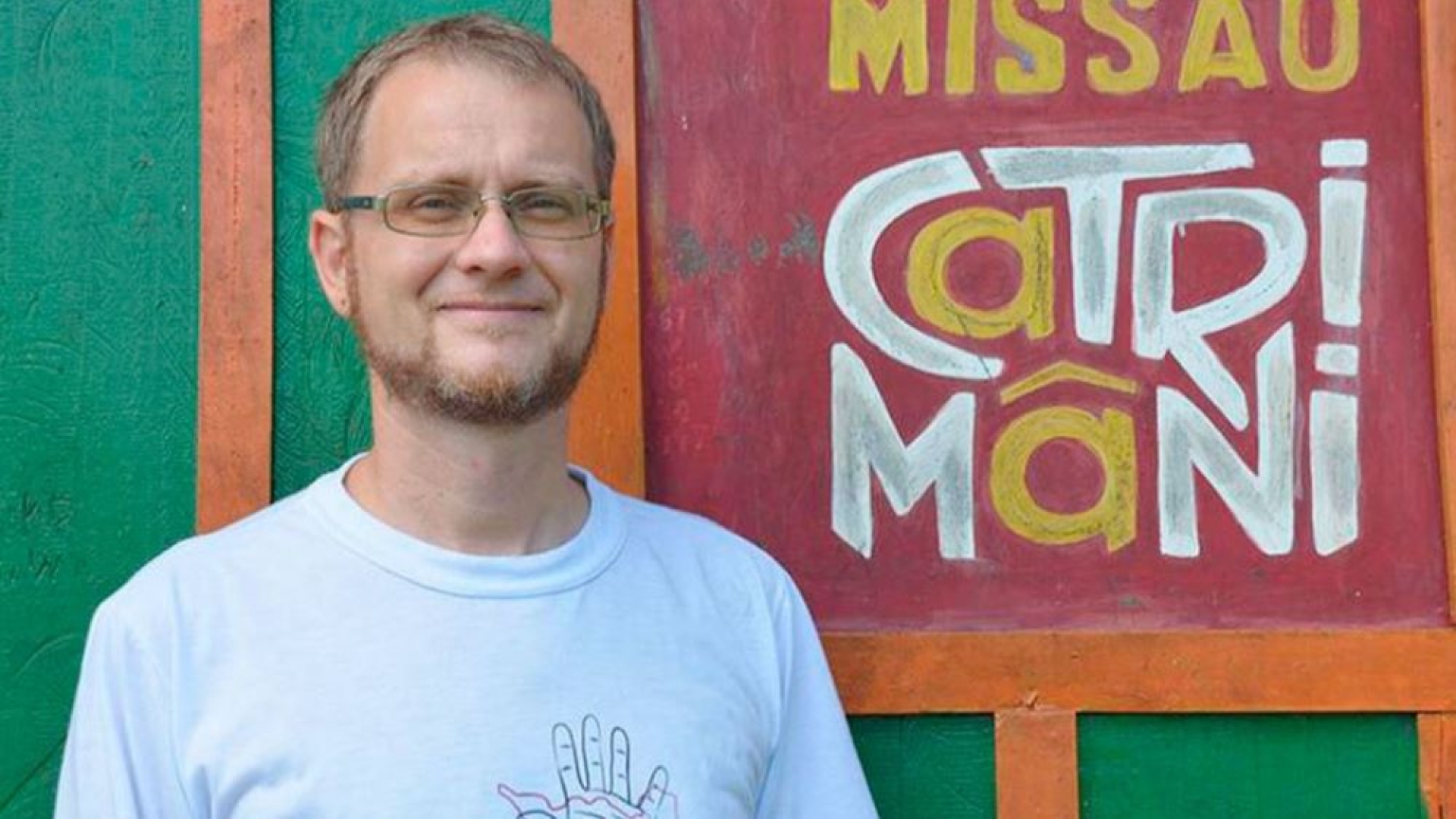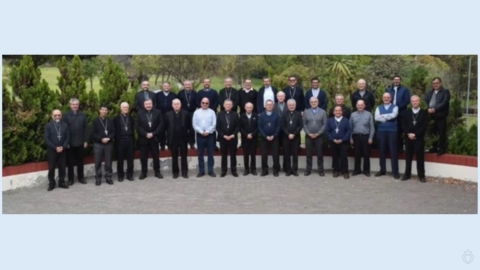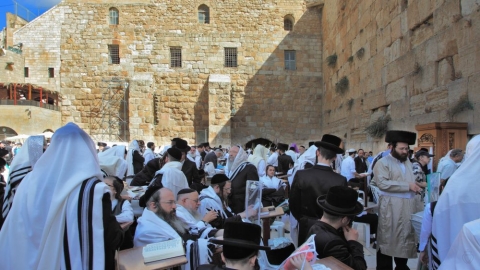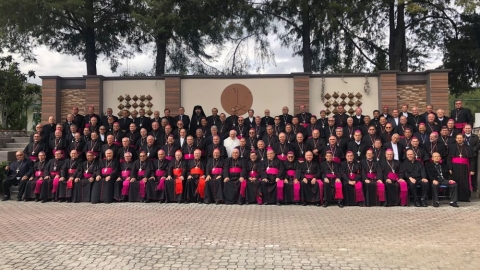Missionaries’ Betrayal of the Amazonian Lands

Le P. Corrado Dalmonego
The Synod on the Amazon has been the occasion for all sorts of excesses, both in its preparation and in its unfolding, through scandalous “liturgical” demonstrations and progressive pastoral proposals. How did we arrive at this point?
The disorders of the synod only reflect the state of Christianity in the Amazon. The current situation is the fruit of a profound corruption of the missions begun more than half a century ago.
Return to the Past
In the seventeenth and eighteenth centuries, Franciscans and Jesuits did admirable work for the conversion of the Amerindian peoples by establishing the Reductions. Realizing that it was not possible to abruptly bring these peoples into contact with Europe without exposing them to numerous dangers, the missionaries established Christian villages that reproduced the native way of life, but transfigured by Catholicism. If we can speak of actual inculturation, it is in the best sense of the word.
Unfortunately, the appetite of the colonial powers put an abrupt stop to this splendid realization. The sorrowful circumstances surrounding this tragic end could lead one to believe that the Church shared the responsibility, which is not true. This sad episode left an indelible memory among the Jesuits.
The Society of Jesus, especially through the work of Fr. De Smet, successfully reproduced this type of evangelization in North America among the Indian tribes of the West. It had a similar fate, however, because of the betrayal of the American authorities.
Birth of Inculturation Theology
It was in Louvain that Fr. Pierre Charles (1883-1954), a companion of Fr. Teilhard de Chardin, developed an original idea about the missions. He insisted on the need to penetrate the cultures of the evangelized populations by recognizing an intrinsic value in them. He paved the way for Joseph Masson (1908-1998), another Jesuit father who in 1962 was the first to use the term “inculturation.” He said that “Western culture is by no means the only Christian culture possible,” an understandable proposal.
In 1975, the 32nd General Congregation of Jesuits examined the term inculturation from a theological angle. The Jesuit General, Pedro Arrupe (1907-1991), in 1977 presented it to the Synod of Bishops, which officially adopted this term in its final document, Ad populum Dei nuntius.
On March 14, 1978, Fr. Aruppe gave a definition in his Letter on Inculturation: “Inculturation is the incarnation of the Christian life and message in a concrete cultural area, so that not only does this experience express itself with the proper elements of the culture in question, but also that this same experience is transformed into a principle of inspiration, at the same time the norm and force of unification, which transforms and recreates this culture.” In the formula there is a certain danger: the establishment of a Catholicism divided by local cultures that have become inaccessible to each other. On December 7, 1990, John Paul II took up and popularized the term in his encyclical letter Redemptoris Missio.
The Implementation of Inculturation
On the ground, the missionaries did not wait. Thus, in 1952, a group of the Little Sisters of the Child Jesus, a congregation founded by Fr. Charles de Foucauld, settled in a Tapirapé village. At the time, there were 51 individuals from this tribe descending from the Topinambous, the ferocious warriors of the Brazilian coast who practiced cannibalism. The sisters were going to help them maintain their traditional rituals, based on shamanism, carefully avoiding any proselytism, i.e., any evangelization. No doubt it was a success, at least on the anthropological level.
Throughout the 1960s, Jesuit missionaries in the Amazon pursued a policy of contacts aimed at preserving cultural forms and isolating groups, without transmitting a foreign culture to them. The 1969 Indigenous Directory accentuates the Aboriginal cultures and sets rules that progressively evolve towards multiculturalism.
Multiculturalism and Interculturalism
Picked up again by the Instrumentum laboris of the Roman synod, the terms multiculturalism and interculturalism are key terms for understanding the texts and their significance. If we follow the neo-missionaries, the culture is a central and unsurpassable value. For Fr. Paulo Suess, a German theologian, a key figure of liberation theology and more particularly of inculturation theology, participating in the synod on the Amazon, “all peoples and all social groups have a historical life plan” codified in their respective cultures, which defines their identity and creates a “second environment” (in addition to the physical environment) out of which “there is no salvation.” This means that apart from their own culture, there is nothing to look for. One consequence is that the missionary’s role with the Indians is reduced to accompanying their struggle against the cultural hegemony of the imperialist peoples who threaten them.
Fr. Suess continues: “The only rupture proposed by the Gospels is the break with infidelity to their own life plan.” This means that the culture of each people must be jealously preserved among the Amazonian Indians, even if it is pagan and contains morally bad elements, such as infanticide. This is not an exaggeration. The Missionary Indigenist Council, which depends on the Brazilian Bishops’ Conference, has defended the idea that the culture of the Amazonian peoples—which among some includes infanticide—is more important than the lives of the children sacrificed by this crime.
As a result, actual evangelization has been discarded for the benefit of the people and the promotion of intercultural dialogue. An emblematic case is that of Fr. Corrado Dalmonego, an anthropologist missionary invited as an expert to the Synod on the Amazon. Director of a mission among the Yanomami Indians of Brazil, he publicly rejoiced in the fact that no Indian had been baptized in this mission in its 53 years presence.
Thus, these false missionaries regard the culture as a kind of immanence, an inner value which is the sufficient source of their salvation. In doing so, they enclose the indigenous peoples in a sort of Amazon zoo, which they present as a kind of virgin land and homeland of the good savage, and even as a model for the West to put in place to save the endangered planet.
This is what Francis said to the natives gathered in Puerto Maldonado, Peru, on January 19, 2018: “Those of us who do not live in these lands need your wisdom and knowledge to enable us to enter into, without destroying, the treasures that this region holds, echoing the words of the Lord to Moses: ‘put off the shoes from thy feet: for the place whereon thou standest is holy ground’” (Ex. 3:5).
Political Liberation, Not Evangelization
If the indigenous peoples of the Amazon exist and defend their rights today at the international level, it is certainly the result of the action of these modern missionaries. The Pan-Indian movement, which brings together 200 indigenous organizations, has in fact been structured through the action of the Indigenous Missionary Council (CIMI). Never could a dusting of peoples spread over vast expanses have united and organized without the permanent intervention of this organism. The neo-missionaries have worked to protect their protégés from the forces threatening their existence and their territory.
Their ultimate demand is to put the Amazonian territory back into the hands of the indigenous peoples, under the control of a supranational authority, as evoked by Pope Francis’ encyclical Laudato si’ (no.175).
The situation of Catholicism in the Amazon is a perfect example of what misguided missionary action can bring about. What remains of the divine charity to which all the activity of the Church is subordinated? What has happened to the Faith, the evangelical morals, and the Christian mores which alone procured eternal?
(Source : Belleau/Wikipedia/Panamazonsynodwatch - FSSPX.Actualités - 06/11/2019)





